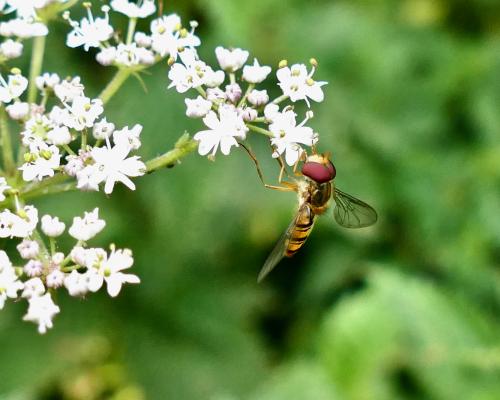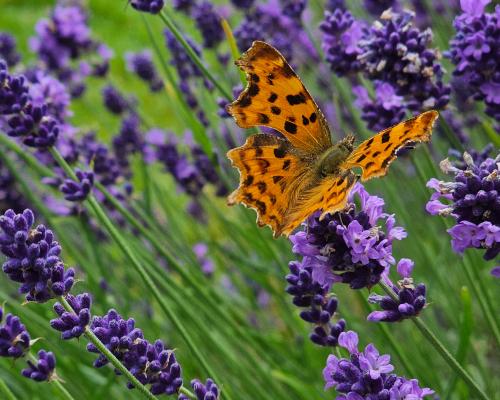
Gardeners have been urged to work with their neighbours to support moths and hover flies after research found them to be particularly sensitive to urban landscapes.
While bees get most of the attention when it comes to supporting pollinators in our cities, researchers found that their less glamorous – but no less important – counterparts from other orders are even more acutely affected by urbanisation.
Three researchers from Sheffield’s school of biosciences investigated the impact that urbanisation in the UK was having on pollinators and found that urban landscapes support 43% fewer pollinator species, with the biggest declines evident the further into the heart of the city they went.
Emilie Ellis, the lead author of the study who carried out the work as part of her PhD, said: “The original focus was going to be on bees as they’re the most charismatic species.
“But then my interest in moths added this on to it, and then [co-author Stuart Campbell]’s interest in flies included hover flies. That’s the kind of cool novelty of this manuscript, that we included three different pollinating groups that are very diverse.”
The research, carried out over the summer of 2019, involved Ellis visiting allotments in Leeds, Leicester and Sheffield, in varying urban densities, to sample the number of pollinating insects from all three groups. “We just collected insects every month for six months in eight sites in each city – so it was a lot of driving.”
Their findings were sobering. They found that for every 10% increase in impervious surfaces – such as roads and building cover – there was a reduction of up to 7.5% in the variety of pollinating species. But the number of moths and hover flies of any species took a far greater hit compared with the number of bees.
“We hypothesise that this could be due to the fact that they’ve got more complex life cycles because they need those different kind of resources other than flowers to become adults,” Ellis said. But that crucial vulnerability also contains a potential answer. If gardeners and urban planners bear in mind the needs of other pollinators, then there are straightforward ways to cater to them.
“We’re so good now planting flowers for pollinators like bees and that could be the reason why we’re not seeing them decline,” Ellis added. “It’s just a matter of taking these guys into account and maybe having some more shrubs or a pond or something like that to also benefit those insects.
“The diversity of habitat is the most important – so you need your flower patch, you need a tree, you need some shrubs, you need an untouched bit of grass – and kind of just keeping the patches that you have diverse and catering for all different types of insects and animals.
“A huge thing that’s important is collaborating and talking to your neighbours and families and friends and encouraging them to do it too. Because an individual allotment or flower garden is pretty small and almost useless, but when you create a whole network of people that are interested and engaged these small little patches can become these huge habitat networks in cities.”
Ellis and her colleagues’ findings are published in the Royal Society’s biological research journal Proceedings B.





